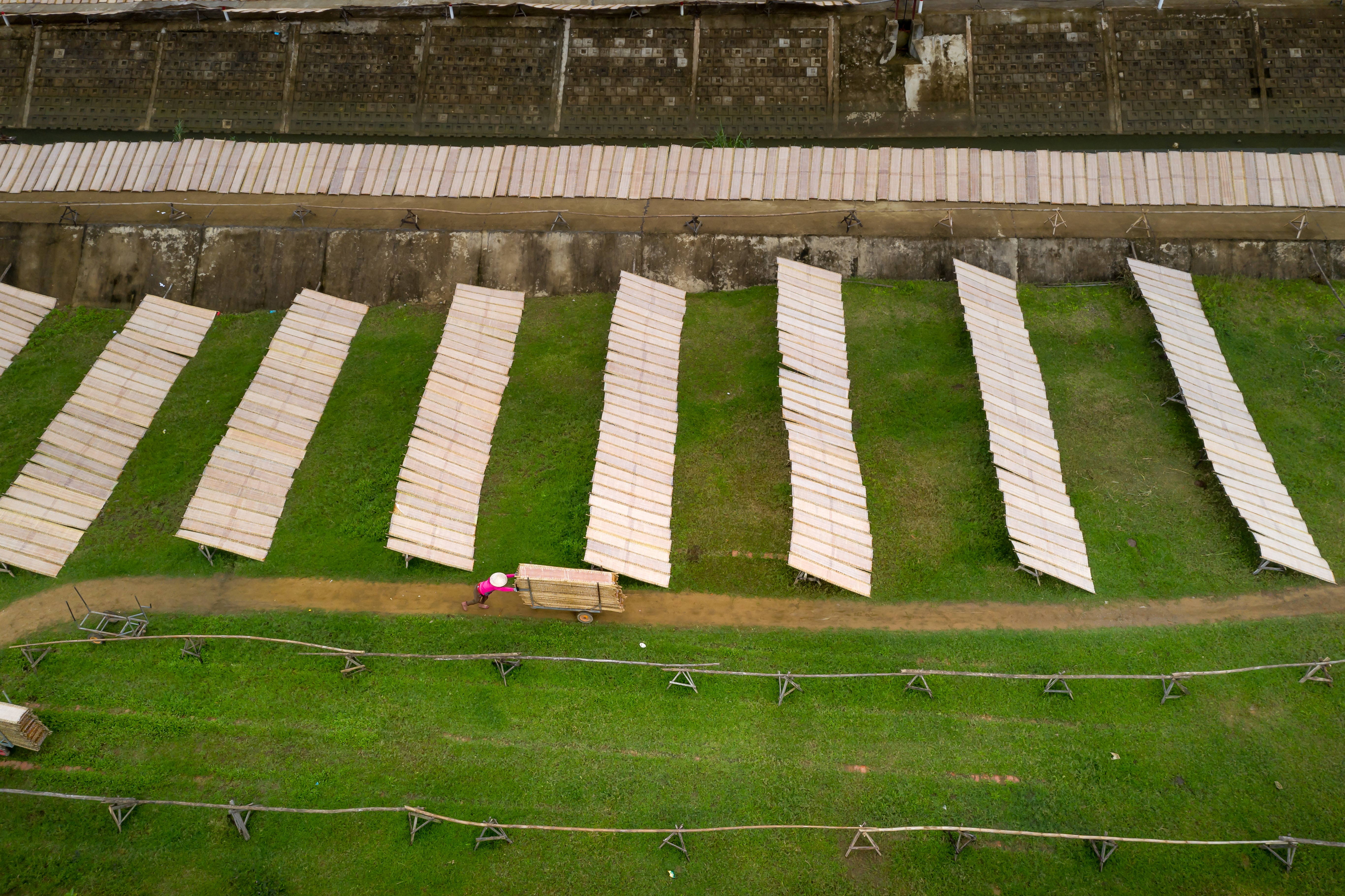We are in an economy where destruction do get more importance than development, and humanity is therefore lost due to fulfilment of his greed. Specific incentives by society from very modern era has made mother earth ill. Her health is deteriorating daily because of our unhealthy consumption of natural resources. To stop such nuisance, we should take minimum consumption of particular commodity that erodes quality of earth surface. Being our country India as per report 2023, as the 5th largest economy in world; green growth and development has been considered in budget 2023-24 as announced by our honourable finance minister Nirmala Sitaraman.
Our honourable Prime Minister launched ‘mission life’ with mantra of ‘lifestyle for environment.’ Before budget session 2023, The notion was simple to instil simple acts in daily lives of people of country for climate change restoration.
Further our finance minister focused on DIY (do it yourself) mantra. India is moving forward for panchamrit (net zero carbon emission) by 2070 to usher green industrial and economic transition. Another concept is ‘Sustainable Development’; the young generation is responsible for achievement of the project, as per our finance minister.

Table of Contents
Green Growth Development
Green growth means fostering economic growth and development while ensuring natural assets continue to provide the resources and environmental services on which wellbeing relies. Basically, Green Growth has seven significant aspects, also known as ‘Saptarishi,’ i.e., Green Credits, Green Farming, Green Mobility, Green Equipment, Green Building, Green Energy, Green fuel to guide India into Amrit Kaal. These incentives will reduce carbon intensity and will provide large scale green opportunities. Collective responsive actions by companies would mobilise additional resources for such activities.
As per IISD policy advisor Balasubramanian Viswanathan, storage and renewable energy evacuated infrastructure is a new deal to share renewables in grid. Two high potential mode of storage, Battery storage and pumped hydro, are of good use. VGF for 4,000 MWH of battery storage is required, and another battery storage, i.e., LCOE, will continue to be high for next few years. Grid integration for evacuation of 13 GW of renewable power from Ladakh will provide impetus for capacity growth. Union Budget will provide custom duty exemption on import of capital goods required for manufacturing Lithium-ion cells for EVs that will positively impact the costs as there is increasing concern about the adoption and local manufacturing for EVs.
About green fuel to facilitate transition of economy to low carbon intensity there is reduction in fossil fuel imports and arousal of technology and market leadership in sunrise sector. As per CEEW, the government must aim to acquire critical minerals from overseas and build capability to process them. Development of hydrogen production technologies such as water electrolysis, steam methane reforming, biomass gratification has been considered.
MISTI – A mangrove initiative for plantation of mangroves along the coastline and salt pan lands, wherever feasible, through convergence between MGNREGA and CAMPA fund and other sources for enhancing biodiversity, eco-tourism opportunities, carbon stock and income generation for local communities and encouraging optimal usage of wetlands.
As per “sustainable development,” states and cities will be encouraged to undertake urban planning reforms and actions to transform into “sustainable cities of tomorrow.” To conduct interdisciplinary research to develop cutting edge applications and scalable problems solution in agriculture, health and sustainable development, three centres of excellence for AI will be set up in top educational institutions.
PM-PRANAM scheme is to promote alternative fertilisers usage in farming. The scheme’s purpose is to reduce heavy dependence upon chemical fertilisers leading to soil degradation, the green house emission from its production, subsidy outlay for government and increase self-reliance.
Under GOBARDhan (Galvanising organic bio-agro resources Dhan) scheme will focus highly on scientific management of dry and wealth plants to promote a circular economy—a total investment of 10,000 cr. INR is made on 200 CBG (compressed biogas) plants, including 75 plants in urban area and 300 community / cluster-based plants. Drought prone areas of Karnataka will be provided with 5,300 cr. INR for upper Bhadra project to allocate sustainable micro irrigation and filling of surface tanks for drinking water.
The Russia -Ukraine war and covid pandemic have exposed the fragility of mineral supply chains and hi the availability and prices of critical industrial metals and essential commodities like edible oil.
A circular economy could rectify the vulnerability and criticality of supply chain. Some strategies like urban mining, i.e., recovering waste from materials and expending use of components and recycling and reusing them.
Three immediate strategies to champion circulatory in the clean energy space are to be adopted. The first step is to facilitate robust implementation of battery and electronic waste management rules as per MOEFCC (ministry of environment, forest and climate change). Involvement of natural farming referring to production of crops, livestock without balance approach of synthetic pesticides, fertilisers, GMOs (Genetically modified organisms) and improvement of soil health by crop rotation and intercropping pattern.
The second step is announcement of advanced research development and demonstration (RD&D) programme for usage of suitable technologies and models for efficient collection, extraction, recycling and utilisation of high value materials and minerals. The third step is to announce a dedicated centre of excellence to spearhead India through leadership, implementation of technical assistance to ministry’s wealth management system, anchoring proposed RD&D programme, thus creating a network of state -of-art research institutions as prescribed by NITI-AYOG, ministry of energy electronics & IT. Improvement of air connectivity will be inspected by petroleum ministry.

Cons of the 2023-2024 budget
There are many points which got avoided in the budget. For instance, it didn’t mention about the increasing dependence on coal usage to provide allocation for power grid efficiency. It did remain silent on coal usage and protection of forests where coal is excavated. It failed to mention the mitigation of air and noise pollution during construction phase and focused more on mass housing scheme (66% over 79,000cr.). Many of the pristine forest in which tribals live have been earmarked for mining and cement and concrete. For example, the developmental project has been recently approved on Shompen and the Great Nicobarese island. Neither did it talk about the impact of deforestation that will impact on the international climatic commitments.
G20 – an international economic cooperation forum, has given India to strengthen “India’s role” in emphasizing people centric agenda to face global challenges. Residents of Mumbai, Delhi and other overdeveloped cities continue to face escalating health effects of ever-increasing air pollution, water pollution, noise pollution etc. No budgetary allocation towards mitigating sources like garbage burning, construction and road dust have been made.
As per lancet report, India led air pollution related deaths and cost 7 lakh cr. INR. India may face emergency due to climate crisis, and pessimism regard this in future. No crucial action on climate change like action plan, national adaptation plan, national mission on Himalayan studies, land displacement by Joshimath and several other regions of Uttarakhand facing land displacement has been made.
Budget Analysis made on Green Growth Development.
Green growth, a transition to clean energy and transport have been made with 35,000 cr. INR. Further, the budget allocation for ministry of environment, forest and climate change have increased from 2,478 cr. INR in 2022-2023 budget to 3,079.4 cr. INR in 2023-24 budget. Budget for controlling pollution increased from revised estimate of 600 cr. INR last year to 756 cr. INR in latest budget. Budget estimate in green power sector has been made from 6,900 cr. INR to 10,222 cr. INR. 185 cr. in last fiscal to rupees 361 cr. as per latest budget. For GOBARDhan project, 5,300 cr. INR for drought prone areas and CBG 10,000cr. INR will be invested respectively.
There is increase in FAME allocation (more than 70% increase to 5,172 cr. in FY23-24). There is increase in indirect benefits of emission reduction through improvement in logistics which focuses on coastal shipping through PPP (public private partnership) mode with viable gap funding. Increase in outlays for railways with higher allocation at INR 2.40 cr. since 2013-14 have been made. Last mile and first mile connectivity for goods movement have made for efficiency and emission reduction.
Conclusion
From the above, we understood various facets of the green growth development and its implications in budget 2023-24. The pros are always celebrated and adopted, and about cons we have deal in a precarious way such that it does not harm much to the environment.
Abbreviations and Terminology Used
IISD- International institute for sustainable development, an independent think tank founded in 1990 working to shape and inform international policy on sustainable development governance. The institute has three offices in Canada – Winnipeg, Ottawa, and Toronto, and one in Geneva, Switzerland.
VGF- Viability Gap Funding, The Scheme aims at supporting infrastructure projects that are economically justified but fall marginally short of financial viability.
MWH – MWh = megawatt-hour. GWh = gigawatt-hour. The conversions between the units are: 1 kWh = 1,000 Wh. 1 MWh = 1,000 kWh.
LCOE-The levelized cost of electricity, or levelized cost of energy, is a measure of the average net present cost of electricity generation for a generator over its lifetime. The levelized cost of electricity, or levelized cost of energy, is a measure of the average net present cost of electricity generation for a generator over its lifetime.
GW -a unit of power equal to one billion (109) watts.
EVs-A EV is defined as a vehicle that can be powered by an electric motor that draws electricity from a battery and can be charged from an external source.
CEEW-The Council on Energy, Environment and Water, commonly known as CEEW, is a Not-For profit Think Tank and policy institution based in New Delhi, India. CEEW was formed to provide independent research-based insights to policymakers for building a sustainable India.
MISTI – MISHTI: A sweet deal to save our mangroves, the acronym stands for Mangrove Initiative for Shoreline Habitat and Tangible Incomes – that’s quite a mouthful
MGNREGA-Mahatma Gandhi National Rural Employment Guarantee Act 2005 or MNREGA, earlier known as the National Rural Employment Guarantee Act or NREGA, is an Indian labour law and social security measure that aims to guarantee the ‘right to work’
CAMPA-Compensatory Afforestation Fund Management and Planning Authority (CAMPA) are meant to promote afforestation and regeneration activities as a way of compensating for forest land diverted to non-forest uses. National CAMPA Advisory Council has been established as per orders of The Hon’ble supreme court.
AI-Artificial intelligence is the simulation of human intelligence processes by machines, especially computer systems. Specific applications of AI include expert systems, natural language processing, speech recognition and machine vision.
PM-PRANAM-PM-Pranam (Promotion of Alternate Nutrients for Agriculture Management Yojana) scheme during Union budget 2023, which will support the use of alternate fertilizers as part of the government’s commitment to a greener future.
GOBARDhan -The Galvanizing Organic Bio-Agro Resources Dhan (GOBAR-DHAN) scheme is implemented under the Swachh Bharat Mission Gramin-Phase 2 by the Department of Drinking Water and Sanitation under the Jal Shakti ministry.
CBG-Compressed bio gas, CBG is made from fermented waste or other biological material, thus making it a CO2 neutral fuel.
Bhadra Project-Upper Bhadra Project is a significant lift irrigation Scheme under implementation in the central region of Karnataka State. It envisages lifting to 17.40TMC of water in first stage from Tunga to Bhadra and lifting 29.90TMC in second stage from Bhadra to Tunnel near Ajjampura, in Tungabhadra sub-basin of Krishna basin.
MOEFCC-The Ministry of Environment, Forest and Climate Change is an Indian government ministry. Secretary Rank, senior most IAS officer, heads this ministry. The ministry portfolio is currently held by Bhupender Yadav, Union Minister of Environment, Forest and Climate Change.
GMOS-GMO” (genetically modified organism) has become the standard term consumers, and popular media use to describe foods that have been created through genetic engineering.
RD&D-Initialism of research, development and demonstration.
Niti Ayog-The NITI Aayog serves as the apex public policy think tank of the Government of India, and the nodal agency tasked with catalysing economic development, and fostering cooperative federalism through the involvement of State Governments of India in the economic policy-making process using a bottom-up approach.
IT-Information technology (IT) uses computers to create, process, store, retrieve and exchange all kinds of data and information. IT forms part of information and communications technology (ICT). An information technology system (IT system) is generally an information system, a communications system, or, more precisely, a computer system — including all hardware, software, and peripheral equipment — operated by a limited group of IT users.
G20-The G20 or Group of Twenty is an intergovernmental forum comprising 19 countries and the European Union. It works to address significant issues related to the global economy, such as international financial stability, climate change mitigation, and sustainable development.
INR -The Indian rupee is the official currency in the Republic of India. The rupee is subdivided into 100 paise, though as of 2023, coins of denomination of 1 rupee are the lowest value in use, whereas 2000 rupees is the highest. The Reserve Bank of India controls the issuance of the currency.
FAME-The Faster Adoption and Manufacturing of Electric Vehicles (FAME) scheme was launched in April 2015 under the National Electric Mobility Mission to encourage electric and hybrid vehicle purchase by providing financial support. Its first phase ran for four years until 2019.
PPP-The term “public–private partnership” describes possible relationships among public and private entities in the context of infrastructure and other services. Other terms for this activity include private sector participation (PSP) and privatization.
We hope that this article serves its purpose of spreading awareness about green growth development as per the budget 2023.
Want to explore more about growth and development in your career, Click here to Book your FREE Consultation Call with our Head Mentor
In case, if you feel that we have missed something important in this article and need to be included for its betterment, feel free to share your suggestions with us through comments or mail us at rudrasupport@gyaannirudra.com.
Stay connected with us to be aware of the different career or business opportunities in other fields as well.
Wishing you all a splendid and exponentially growing career journey ahead.

Ms. Suravi Rani Bhanja is a student of economics at Rama Devi Women’s University, Bhubaneswar, Odisha


